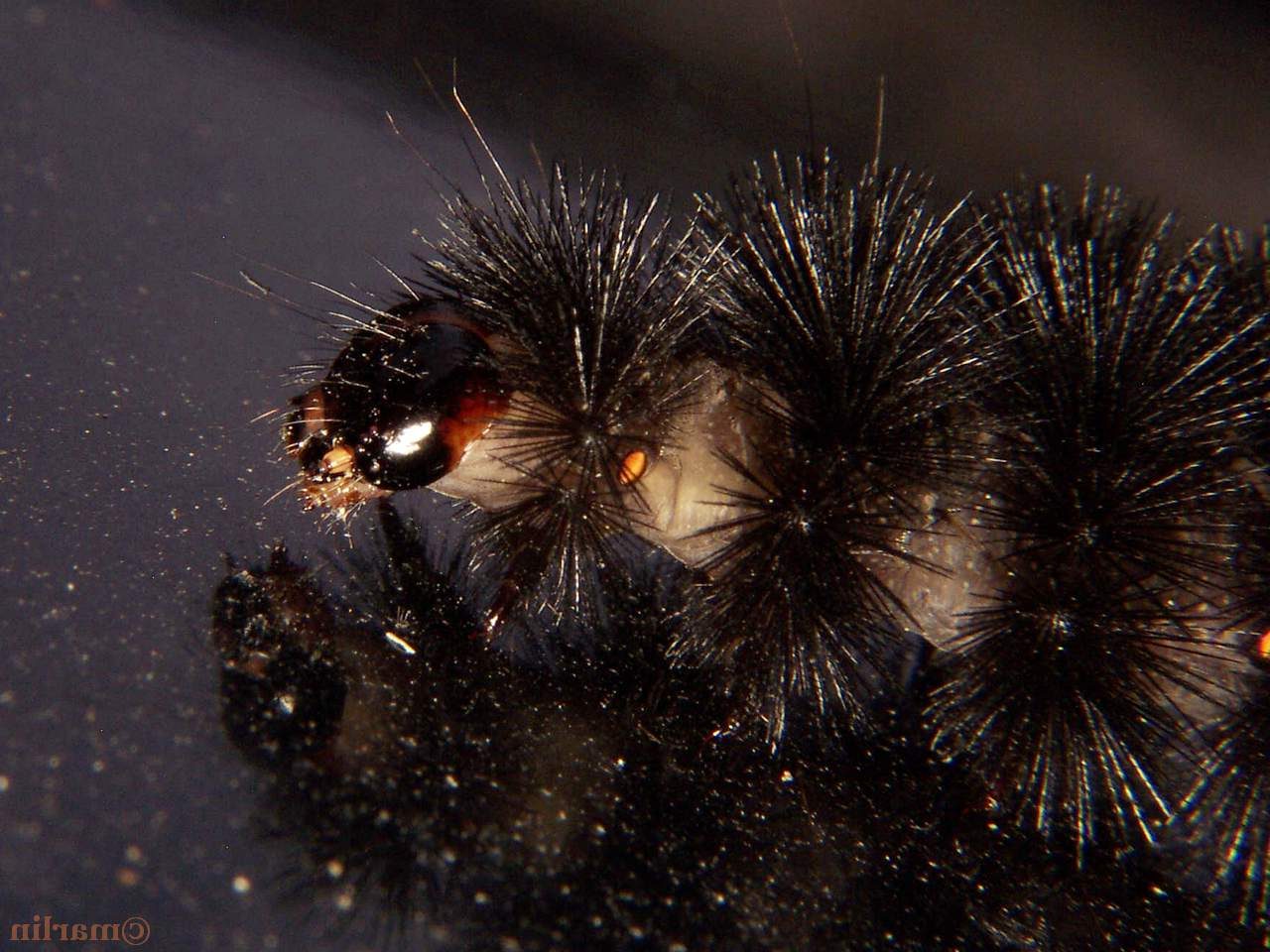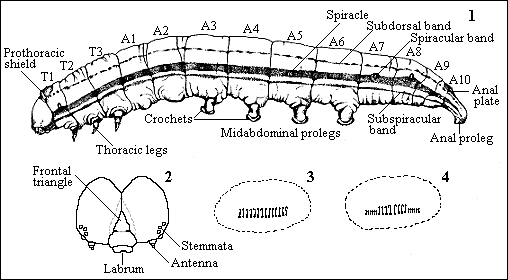Banded Woolly Bear Caterpillar
Pyrrharctia isabella
Larval form of the Isabella Tiger Moth. This critter manufactures its own blood-antifreeze. Common folklore has it the severity of the coming winter can be predicted by the amount of black on the banded woolly bear. However, the relative width of the black band varies with age, and has nothing whatsoever to do with weather. Isabella tiger moth cats overwinter, surviving freezing weather by producing their own antifreeze, with which their cells are infused.
 Setae (bristles) in extreme closeup. The orange ellipses are the spiracles through which the creature breathes
Setae (bristles) in extreme closeup. The orange ellipses are the spiracles through which the creature breathes

 Fig. 1—Diagram of a caterpillar.
Fig. 1—Diagram of a caterpillar.
The head bears 6 lateral eyes (the stemmata) that are usually arranged in a crude circle. Other insect larvae resembling caterpillars have only a single lateral eye.
Many adults and larvae of the tiger moth family are diurnal, that is, they are active during the daytime.
The woolly bear caterpillars are familiar to many because of this habit; they can often be seen traveling along the ground or crawling amidst low vegetation.
These encounters are often the first many children have with the moths, and the “woolly” aspect of these creatures should be used to illustrate a key difference with caterpillars of many common butterflies (which are more properly called larvae).
References
1. United States Geological Survey, Caterpillars of Eastern Forests (morphology)



